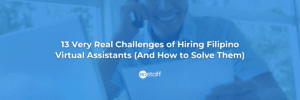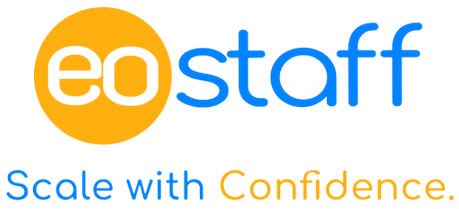The capacity to manage a number of client calendars efficiently becomes a vital skill set for virtual assistants (VAs) in the typical situation of modern business needs. This ability not only increases productivity, but also promotes trust and reliability, which eventually becomes a perfect and bridge-less connection between the CEOs and their crucial engagements. In this article, we will explore the art and science of calendar management from the perspective of the virtual assistant, who will help you to keep track of every commitment with accuracy and ease.
-
The System of Integrated Calendar Tools is the way to go.
The integration of virtual assistants with calendar tools is extremely vital. Tailored tools like Google Calendar, Outlook, Calendly, or Acuity Scheduling create an option for VAs to connect all platforms they operate on, from email, social media, or CRM systems. Tools of this kind have the ability to organize schedules across multiple time zones, send out appointment reminders, and keep track of other important data. The VAs, through their in-depth knowledge of these tools, can easily schedule overlapping schedules without any conflicts, thus providing all the stakeholders with a clear and comprehensive view of the available times and commitments. Being able to avoid this kind of scheduling problem actually boosts efficiency and improves the whole process of communication that takes place between the representatives of the business, as well as that of their clients, allowing them to function properly in a highly diversified environment.
-
Build a Clear Communication Channels
Mastering communication skills is crucial in managing several client calendars. The virtual assistants should establish direct channels of communication with each of their clients to keep all updates current as well as give prompt responses to any scheduling issues. Collaborative tools such as Slack or Microsoft Teams make communication between team members more convenient and vice versa, with all the information being exchanged instantaneously and team members always being able to adjust the calendar in a timely manner. These regular check-ins are the best way to make sure that all the appointments are made on time, to reschedule the conflicts fast, and to prioritize the tasks effectively. This communication level guarantees that the consultant and the client will be on the same page all the time, eliminating the risk of misunderstanding and scheduling errors.
-
Prioritize and Categorize
Category and priority order of appointments are the most important things in the work of virtual assistants. The color-coded systems in calendar applications allow for the visualization of tasks of different importance—high-priority meetings, medium-importance tasks, and low-priority activities. This tactic not only demarcates the objectives for daily or weekly planning but also permits fast decision-making when conflicts happen, so it enables making the necessary changes for the adjustments of schedules. Proper prioritization makes sure that both the client and the VA get the attention and resources they deserve. It utilizes the time of the client very well and does not overburden the VA with workload.
-
Time Zone Management
The virtual assistants who are going to be handling the clients from different parts of the world should be really good at managing the time zones. This is a useful skill that can be used to set appointments that suit all the members’ time zones and, above all, not to cause any confusion or inconvenience. One cannot overemphasize how useful time zone converters like Worldtimebuddy are when it comes to scheduling meetings across different time zones. Through this skill, the participants are not forced to attend the meeting at an unreasonable hour, which is a sign of professionalism and respect for the participants’ personal and professional time.
-
Advance Planning
The foundation of efficient calendar management is proper planning in advance. Virtual assistants are supposed to manage not only current commitments but also anticipate future needs by scheduling weeks or even months in advance, especially for those clients who have a very crowded calendar. This reactive approach involves, among other things, the consideration of peak periods, the pre-booking of repeat meetings, and the planning and setting of deadlines and project milestones. This kind of insight gives us time to prepare and helps to avoid last-moment rushes, thereby guaranteeing a harmonized workflow where the client is able to focus on the core of their responsibilities without being distracted.
-
Leverage Automation Wisely
The automation tools can be very helpful, but virtual assistants should use them carefully. The use of automation to schedule recurring appointments, provide reminders, and allow buffer times around meetings streamlines the management process. On the other hand, VAs must make sure that automation complements the strategic management efforts rather than replacing personalized attention and supervision, taking into consideration the fact that effective service is achieved through those. The thoughtful use of automation can be a way to prevent the technology from becoming over-reliant, which in turn will help to maintain the human touch that is usually needed for handling complex or sensitive scheduling tasks.
-
Maintain Impeccable Records
Managing time with multiple calendars is only possible with perfect record-keeping. Virtual assistants should be tracking the schedules, as well as any customer preferences, past rescheduling problems, and meeting feedback. These records not only help in individualizing service based on the preferences of the clients but also help VAs anticipate and address potential challenges in advance. This detailed nature of the documentation boosts the VA’s legitimacy as an important asset that makes their job of serving their clients efficient and effective.
-
Formulate a contingency plan.
Virtual assistants that are efficient take into consideration the unpredictable. Preparing contingency plans for each of the clients gives us the ability to cope with unforeseen incidents or emergencies promptly. Being aware of who to turn to for last-minute rescheduling and having a list prepared of possible alternative meeting places can save precious time and prevent any conflicts. This preparedness is what makes virtual assistants able to deal with unexpected situations with ease and confidence, and thus, the client’s schedule is adjusted and kept in place.
-
Life-Long Learning and Flexibility
The virtual assistance landscape is being updated every now and then, and perpetual learning is an inevitable part of remaining superior in calendar management. Virtual assistants should keep up with the latest software releases, try out emerging technologies, and implement new management techniques. This particular commitment to the professional development of a company’s employees, however, is not only vital to a company’s competitive advantage, but it also enhances the employee’s ability to deliver the most current and relevant services to their clients, ensuring the firm’s competitiveness in the market.
-
Build your network of resources
The creation and maintenance of a network of resources, including other virtual assistants, mentors, and professional groups, can be a great source of support. These networks provide a platform for the exchange of views, same-time issues, and a source of new ideas that will help you improve managing your calendar.
With the successful implementation of these ten virtual assistant best practices, virtual assistants are able to stand out and ensure that not only do they meet the expectations but also exceed the expectations of busy CEOs and business professionals. As the calendars become more and more complicated and the clients’ requirements increase, the role of the VA is becoming more and more important, and it is turning into the central point of organizational success. However, with the right strategy, VAs can change the supposedly boring matter of scheduling into a strategic component of the business management system, showing that every day counts in the tough world of business.
Frequently Asked Quesions
Virtual assistants use tools like Google Calendar, Outlook, Calendly, and Acuity Scheduling to integrate and manage multiple client calendars efficiently, ensuring seamless scheduling across platforms.
Virtual assistants prevent overlapping schedules by using integrated tools to check availability across time zones and platforms, ensuring that there are no conflicts and that all appointments are well-coordinated.
Communication is key in managing multiple client calendars. Virtual assistants rely on tools like Slack or Microsoft Teams for real-time updates and quick responses to scheduling changes, ensuring clarity and preventing errors.
Virtual assistants use color-coding and priority systems within calendar tools to distinguish between high-priority meetings and lower-priority tasks, allowing for more efficient time management and quick decision-making when conflicts arise.
Virtual assistants use time zone management tools like Worldtimebuddy to accurately schedule meetings across different time zones, ensuring that no participant has to attend at unreasonable hours.
Advance planning allows virtual assistants to anticipate future needs, schedule recurring meetings, and plan deadlines or milestones, ensuring that the client’s calendar runs smoothly and prevents last-minute rushes.
Automation tools help virtual assistants streamline recurring appointments and send reminders, but they ensure that automation complements personalized management to maintain the human touch for sensitive tasks.








